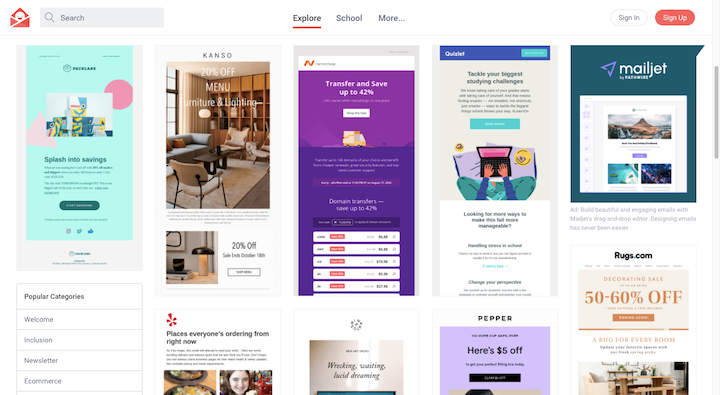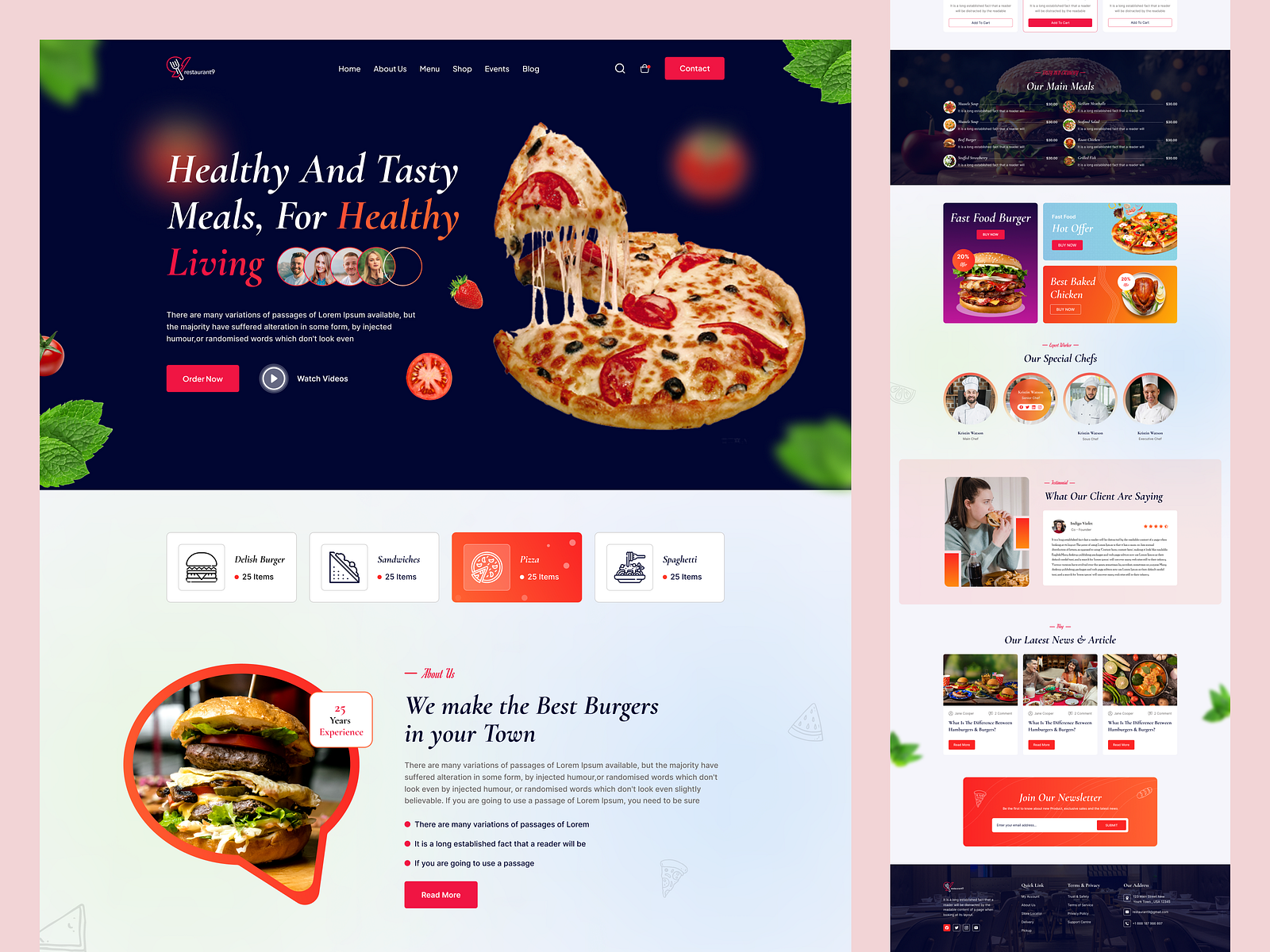Exploring the Connection Between Website Design and SEO Performance
Exploring the Connection Between Website Design and SEO Performance
Blog Article
The Ultimate Overview to Modern Site Design Trends
In the ever-evolving digital landscape, modern website design trends play an important function in shaping individual experience and interaction. From the rise of minimalist layout principles that focus on simplicity to the impact of bold typography in specifying brand name identity, each component contributes to a cohesive on the internet existence.
Minimalist Layout Concepts
Minimal design concepts stress the concept that much less is much more, supporting for simplicity and functionality in visual interaction. This approach remove unnecessary elements, concentrating instead on crucial elements that convey the desired message effectively. By prioritizing clearness, minimalist style improves customer experience, allowing site visitors to navigate web sites effortlessly.
Core tenets of minimalist layout include making use of adequate white room, which creates a sense of balance and organization. This negative area not just guides the visitor's interest to crucial elements however additionally fosters a soothing visual atmosphere. Furthermore, a minimal color palette is typically employed, utilizing monochromatic plans or soft hues to maintain aesthetic communication and avoid frustrating the customer.
Typography plays a critical function in minimalist design, where clear fonts are chosen for their simpleness and effectiveness in interacting content. Inevitably, minimalist design concepts grow a concentrated setting that urges individuals to involve with the content, boosting the overall efficiency of contemporary web site layout.
Bold Typography Choices
Accepting strong typography choices has actually become a specifying feature of modern internet site layout, as it effectively records focus and shares strong messaging. Developers are progressively utilizing typography not merely as a functional aspect yet as a key aesthetic component that enhances the overall aesthetic and user experience.

Moreover, the juxtaposition of bold typography with minimal design concepts enables striking contrasts, enhancing readability while keeping visual charm. The usage of whitespace around strong message better highlights its importance, guaranteeing that the message reverberates with the audience.
As digital landscapes become extra competitive, leveraging strong typography enables brands to separate themselves and leave a long-term impression. The cautious option of typefaces and their application can stimulate emotions, develop tone, and drive activity, making strong typography an important device in modern-day website style. Ultimately, it is a powerful way to improve narration and make sure that crucial messages are not only seen yet likewise felt.
Responsive and Mobile-first Style
Mobile-first and receptive layout has emerged as a vital concept in modern-day web site advancement, mirroring the raising dependence on mobile gadgets for accessing on the internet web content. As user habits changes towards mobile browsing, designers should prioritize creating experiences that adjust flawlessly throughout various screen sizes and resolutions.
A receptive layout ensures that an internet site automatically readjusts its layout, images, and performance based on the gadget visit this website being utilized. Mobile-first style supporters for creating web sites initially for smaller displays, subsequently scaling up to bigger screens.
Implementing mobile-first and receptive principles not only accommodates user choices yet also aligns with seo (SEO) methods. Significant internet search engine, like Google, focus on mobile-friendly internet sites in their rankings, making it critical for organizations to embrace these style techniques. In a competitive digital landscape, embracing mobile-first and receptive design is not just a choice; it is crucial for guaranteeing availability and involvement with a varied target market.
Engaging Microinteractions
Microinteractions play a crucial function in boosting individual engagement and general internet site experience, specifically in the context of responsive and mobile-first style. These refined layout components supply prompt responses to customers, making interactions much more delightful and instinctive. Instances include button computer animations, notification notifies, and packing indications, which not just overview individuals yet also develop a feeling of connection with the user interface.
Integrating engaging microinteractions can dramatically boost use by minimizing cognitive tons. When customers obtain aesthetic or auditory comments upon doing actions, such as clicking a button or submitting a form, they really feel extra confident in their options. This fosters a smoother navigation experience, eventually boosting individual retention.

As site design fads remain to develop, the significance of her comment is here microinteractions can not be overemphasized. They serve as the refined yet powerful touchpoints that transform average communications right into phenomenal experiences, thus elevating the total performance of modern web design.
Sustainable Website Design Practices
Lasting internet layout techniques are ending up being progressively crucial as the electronic landscape expands and ecological problems increase. Designers and developers are acknowledging their obligation to produce internet sites that not only offer customer requirements yet also lessen ecological effect. This approach includes numerous key approaches.
To start with, optimizing energy usage is critical. Sites must be made to load promptly and efficiently, which minimizes server power use and enhances user experience. Techniques such as picture compression, minimizing HTTP demands, and using modern coding techniques contribute significantly to this goal.
Second of all, picking environment-friendly organizing providers is important - website design. Lots of organizing firms are currently powered by renewable resource resources, making it possible for websites to operate in a more lasting manner. This choice shows a dedication to lowering carbon impacts
In addition, taking on a knockout post a minimalist layout can enhance sustainability. Less components on a page cause less data transfer, which not just quickens packing times but also preserves sources.
Finally, promoting digital access makes certain that internet sites get to a bigger target market without unneeded bloat, aligning user experience with environmental responsibility. By incorporating these sustainable techniques, internet designers can add favorably to both user involvement and the world's health.
Verdict
In recap, modern web site design patterns highlight the integration of minimalist concepts, vibrant typography, and responsive design to enhance customer experience. Embracing these patterns is vital for developing impactful electronic experiences that resonate with customers in a progressively competitive on the internet landscape.
In the ever-evolving electronic landscape, contemporary website style trends play an important function in shaping customer experience and engagement. By prioritizing clearness, minimalist style improves user experience, enabling site visitors to navigate internet sites easily.
Ultimately, minimalist layout principles grow a focused atmosphere that motivates individuals to engage with the content, improving the general effectiveness of modern-day web site design.Microinteractions play a pivotal duty in enhancing customer involvement and general internet site experience, specifically in the context of responsive and mobile-first design.In recap, modern web site layout trends emphasize the integration of minimal concepts, strong typography, and responsive style to boost user experience.
Report this page